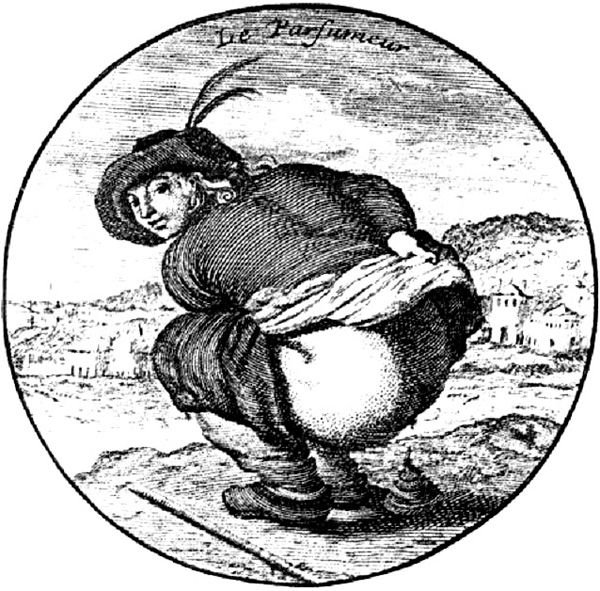You may hate them, or you may love them; but you surely can’t ignore the importance of toilets. The nigh ‘sacred’ institution allows us to perform the very basic and crucial of all human sanitary practices. And, as such, without toilets and their modern iterations, our lives would surely have been a whole lot miserable. How much miserable – you ask? Well, the list of ominous scenarios include epidemic diseases, worsening hygiene conditions, water borne infectants and even a general loss in personal well being. In this regard, many academics and writers have actually gone to say – the more developed a society, the more sanitized it became. So, without further ado, let us go briefly through this page of history which has seldom been discussed before; the very evolution of our ever trusty toilets.
1. The very first toilets were no toilets!

This really doesn’t come as a surprise (or does it?!). Our cave dwelling forefathers believed in the freedom of ‘open defecation’. This practice went on for thousands of years, before the advent of more ‘advanced’ cultures. On a socio-cultural level, as sedentary lifestyles grew, so grew the human settlements. And, when such spatial (and population) progression took place, the need for collective hygiene became all the more important.
2. With settlements, came the specific toilet zones.

As loose settlements gave way to even larger yet organized cities, specific toilet areas sprung all over the place. Some Neolithic settlements like the Skara Brae (3100-2500 BC) in Scotland’s Oarkney Islands already showed dedicated spaces (with holes in raised mound-like structures) where people could attend their nature’s call. Other more advanced cultures like that of Harappan civilization (around 2500 BC) of India actually had water borne toilets in each house (see above image). These toilets were even connected to outside drains, which were covered with burnt brick slabs. This whole progressive sanitary scope was certainly a positive consequence of the exceptional city planning skills of the Harappan people.
3. And, then came the Classical Era engineering.

Archaeologists have found evidence of sitting-type toilets in Egypt (circa 2100 BC), while latter Greeks used to go out of their homes for defecation purposes. However, (as always) it was the Romans who initialized complex toilet systems, which was partly a result of their military engineering prowess. In this regard, the Roman engineers actually understood the needs of basic sanitation that entailed keeping water bodies (which are valuable drinking assets) separate from excrement. So, with an intention of keeping their legions and citizens free of water borne diseases, some public toilet arrangements were designed to work with exclusive sewage systems – like the above pictured latrine in Ostia Antica.
4. The ‘Dark Age’ of medieval toilets.
Europe fell into a dark age after the exit of Western Romans; and as such, so did its sanitation infrastructure. In this war-ridden, chaotic era, planned cities gave way to obtrusive castles and forts, with ordinary folk having limited access to specialized toilets. Even these castles and citadels just had primitive perforations on their walls for the discharge of human waste. The perforation connections carried the waste all the way to the adjacent rivers. Other forms of toilets included chamber pots, cess pools and close stools.
However, sanitation did see some form of advancements in other parts of the world, especially in areas governed by the flowering Islamic culture. But, again there is very little evidence on how much improved their actual toilet systems were, when compared to their neighbors both in the west and in the east.
5. Moving onto the 18th Century, an era of inventions.

The 18th century has been called as the ‘century of toilets’, by Dr. Bindeswar Pathak, founder of the sanitation oriented Sulabh Movement. Of course, with the effects of Renaissance in the earlier two centuries, toilets designs did become more ornate and expansive in their scope (we see many examples from the Ottoman palaces like the Topkapi). In fact, a type of water closet mechanism was invented by John Harrington long back in 1596. But, with the advancement of technology and resourceful culture of 18th century, many inventors and scientists further developed the core idea of a personal toilet. Thus many designs were conceived during this period, including pan closets and valve type flush toilets. These sanitation systems also went through an aesthetic evolution, which made the ambit of toilets more ‘alluring’ to the affluent, fashionable society.
6. Finally, we come to our modern toilets.

The first taste of our modern day toilets started with the typical Victorian era ingenuity, which entailed various innovations such as the water trap and the U-bend. The commercial focus was also gradually shifting from catering to rich clients to providing collective solutions for the masses. However, the ‘hi-tech’ push only came after the post-Second World War period. Japanese company TOTO launched their revolutionary Washlet model in 1980, which provided the user with a jet of warm water. And now, even that scope has been easily traversed with the conceptions of contemporary ‘smart’ toilet systems.
Sources: Sulabh Toilet Museum, Toilet-Guru



